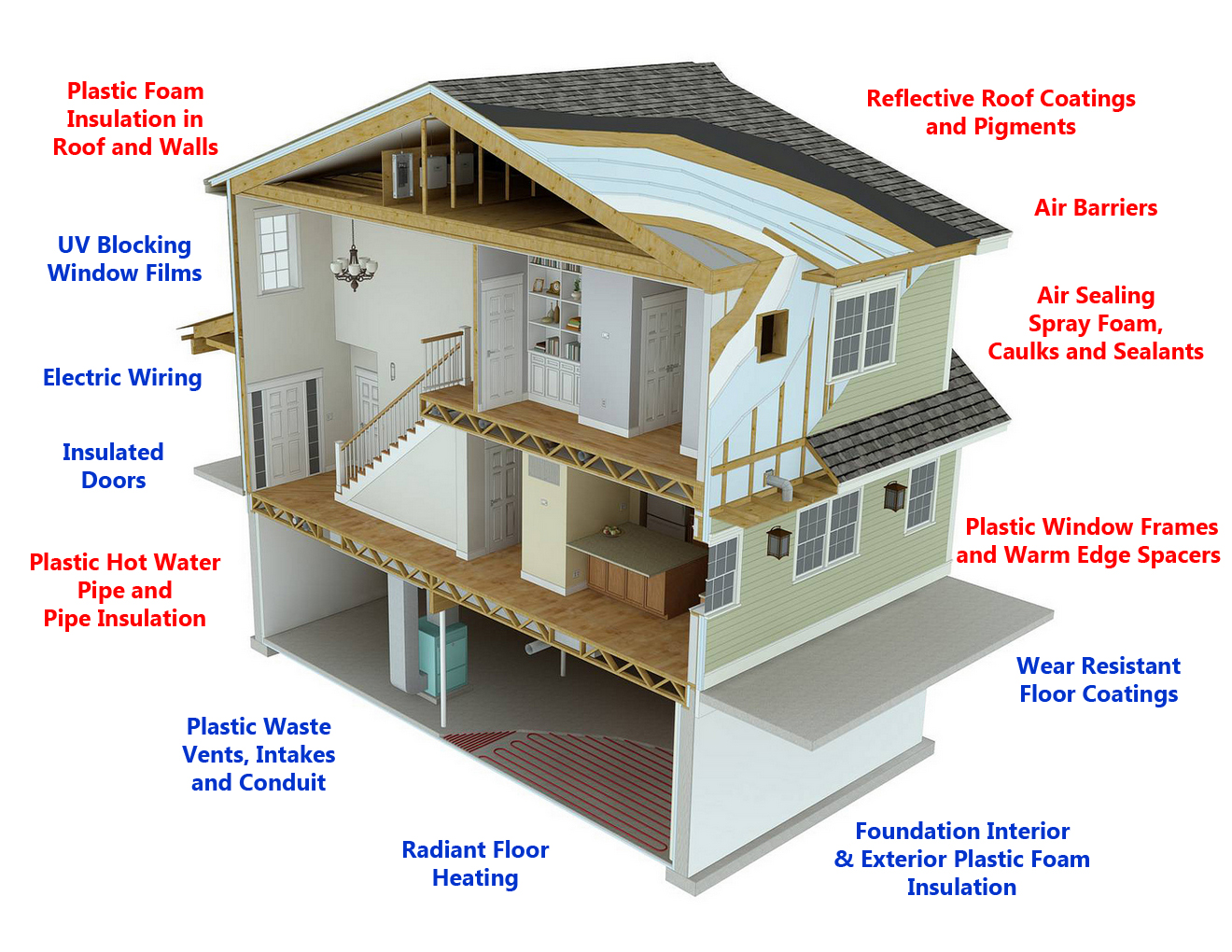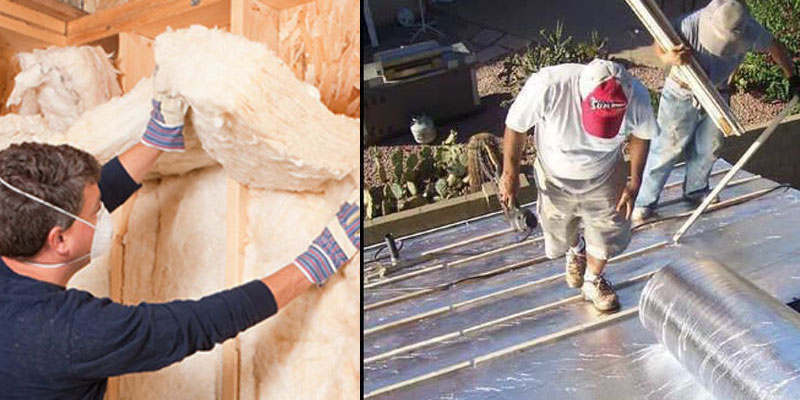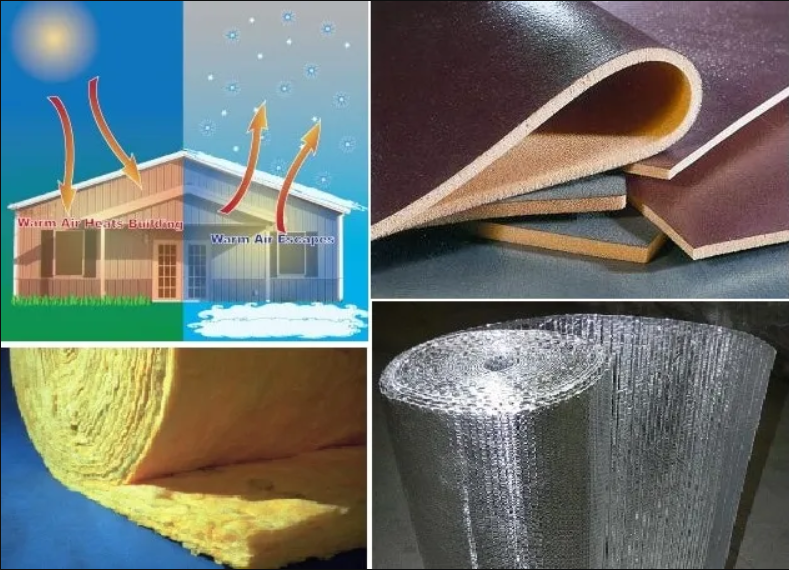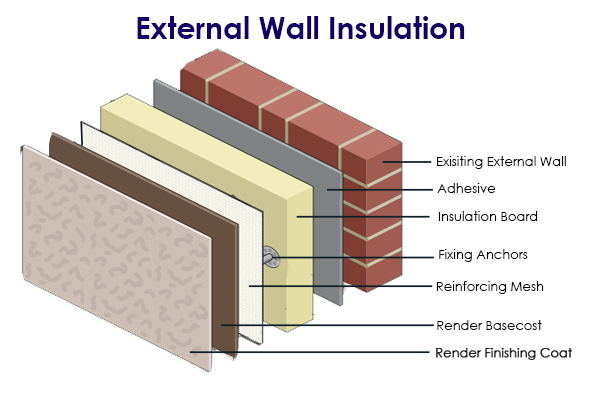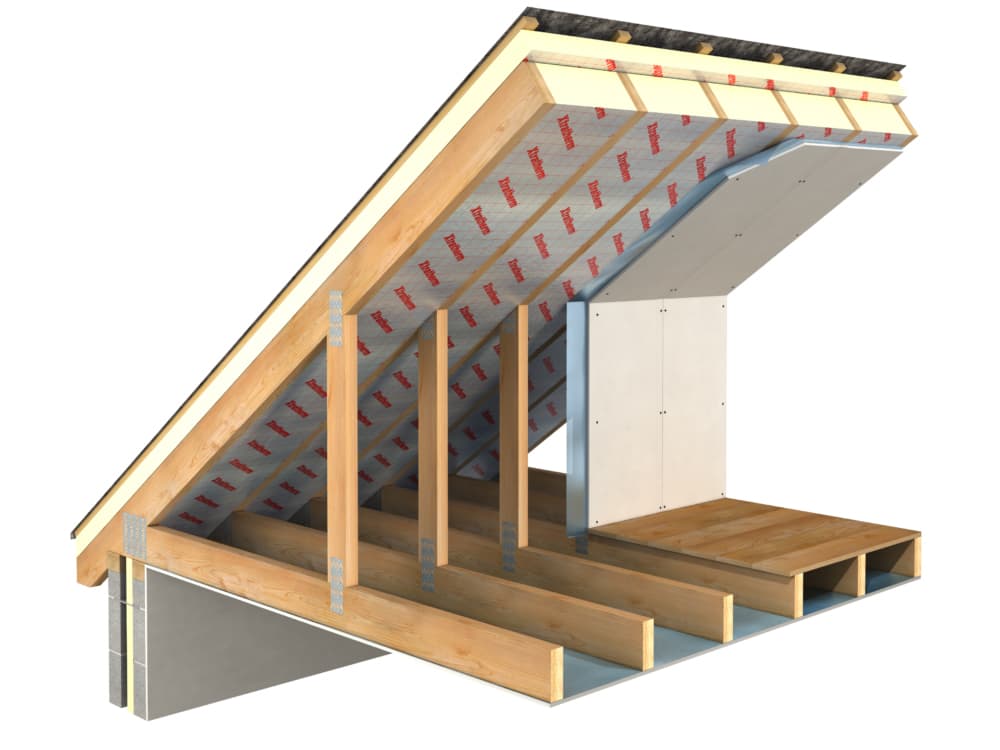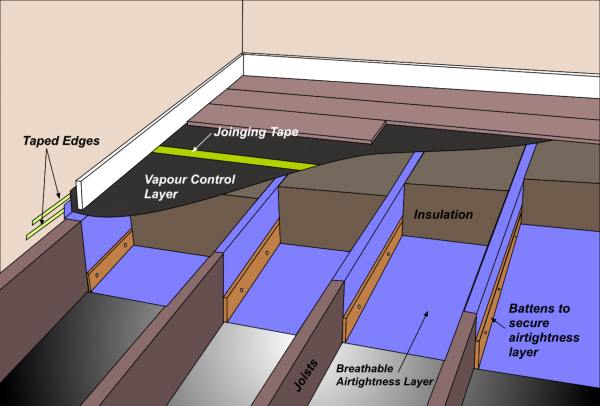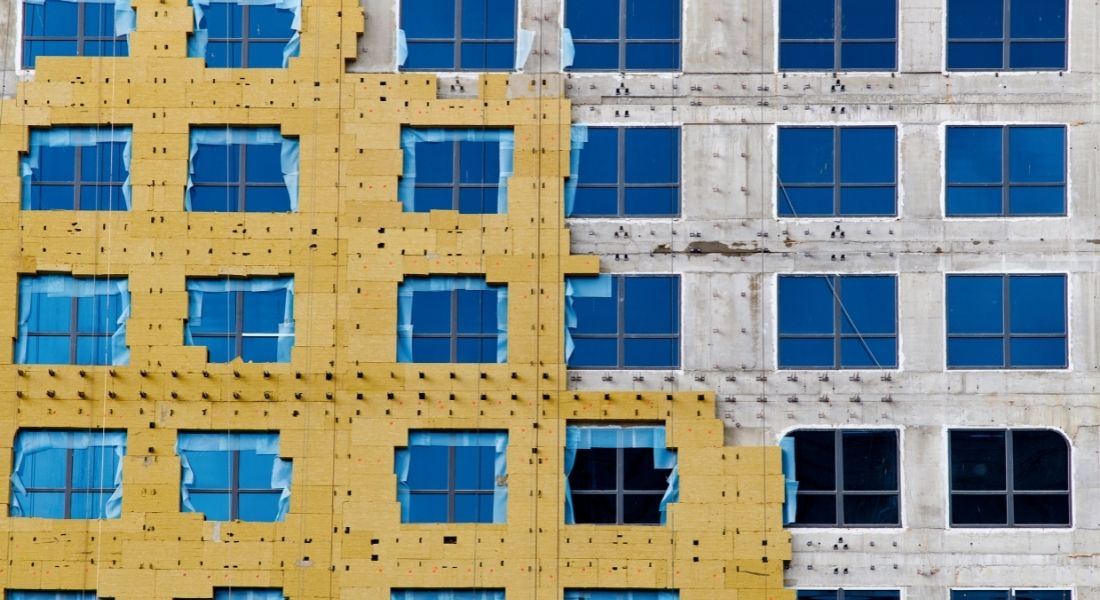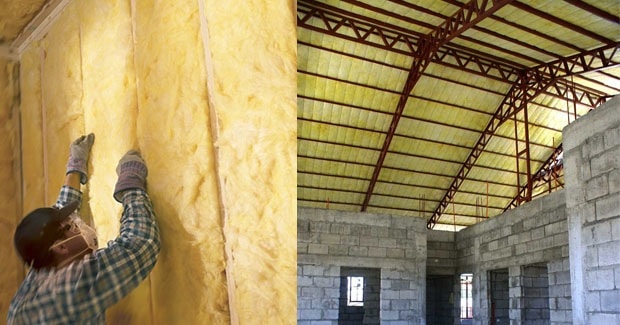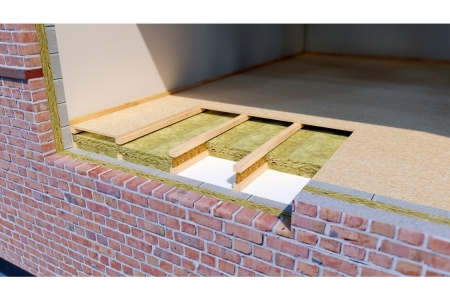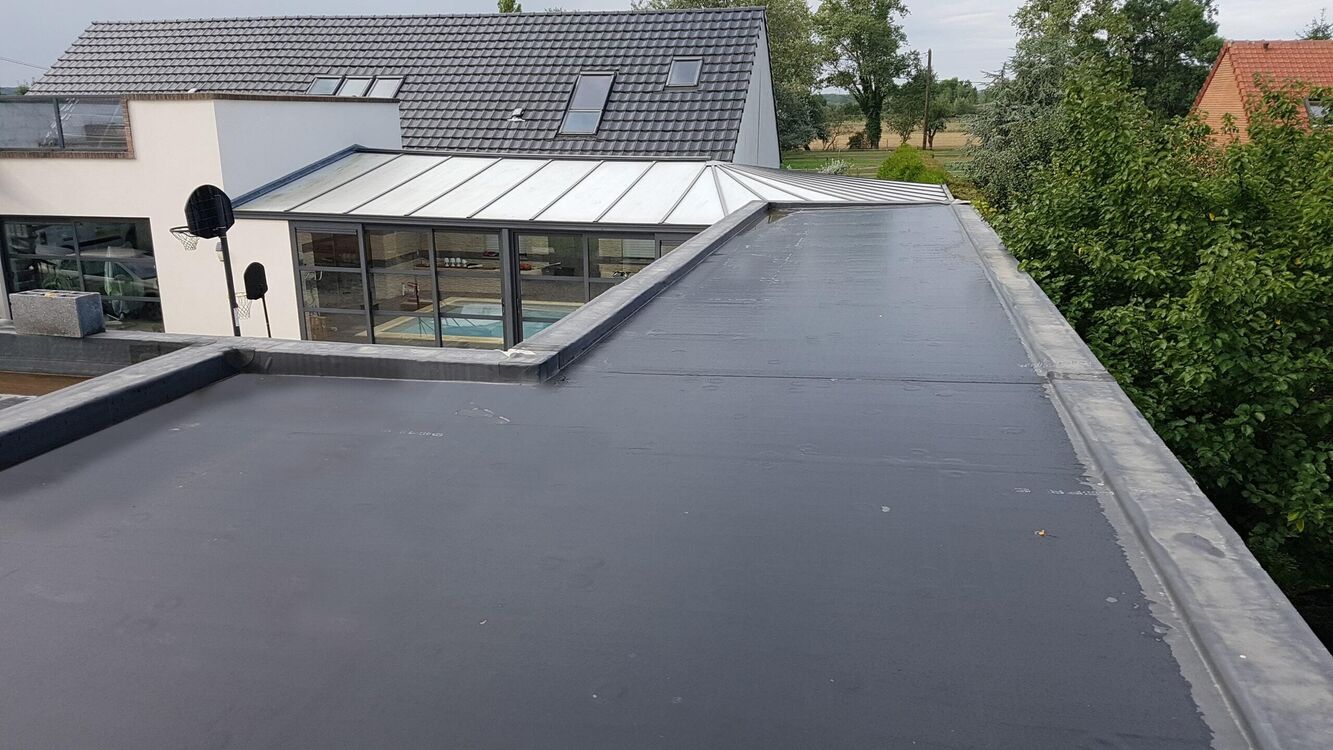1. What is thermal insulation in buildings?
Insulation is one of the most important building features. Thermal insulation in buildings implies energy efficiency, cost saving, comfort, and safety of the construction: although the majority of thermal insulation in buildings is used for thermal purposes, it also provides solutions for acoustic, fire, and impact concerns. Without proper thermal insulation in buildings, you’ll need to invest in costly heating and cooling devices.
In terms of this conditioned space inside the building, there’s a technical term called “thermal envelope” or “building envelope”. And a thermal bridge is the point in a building envelope that allows heat conduction. Thermal insulation in buildings is designed to minimize this heat conduction: in terms of the effectiveness of the insulation, it’s mainly evaluated by R-value (To know more about the R-value, click What is the R-Value of Insulation Materials?
Generally, there are two types of thermal insulation in buildings: bulk insulation made from glass wool or mineral wool, etc., which are designed in rolls or boards acting as a barrier to heat flow between the building and the outside; reflective insulation made from rubber, plastic or aluminum foil, which is designed to deflect radiant heat.
Main types of thermal insulation in buildings
As we mentioned before, thermal insulation in buildings can be classified into two types: bulk insulation and reflective insulation according to their forms and functions.
In terms of types of material, there are mainly three types of thermal insulation in buildings: mineral fiber, cellular plastic, and plant/animal derived. Mineral fiber products mainly refer to rock wool and glass wool, which are melted at high temperatures, spun into fiber, and then having a binding agent added to form rigid sheets and insulation batts. Both glass wool and mineral fiber wool for buildings have a long service life and can be reused at the end of their life.
While talking about the cellular plastic-type, we mainly refer to foam rubber sheeting. It’s worth mentioning that in the past, the production process involved ozone-depleting agents, such as HCFCs or CFCs, etc. These components cause damage to the ozone layer, which is why we use neutral hydrocarbons instead during production: ECOIN’s rubber foam sheets are all free of CFCs and HCFCs.
Plant/animal-derived products include sheep wool, cotton, and flax, which aren’t very popular types of thermal insulation buildings: these aren’t very durable and their service life is relatively short.
Main applications of thermal insulation in buildings:
There are various applications of thermal insulation in buildings, from the roof to the foundation of the house. Generally speaking, the main applications are the following:
Exterior wall insulation–The head and cold radiate through the exterior walls of the house and for this reason, thermal insulation is necessary: you can fix thermal insulating material sheets inside and outside the exterior wall or reduce heat/cold transmission.
For different structure you may need different types of thermal insulation in buildings: if you are still in the designing phase of the construction, rigid panels of mineral fiber wool is good for wall cladding; if the wall cavities are open, the injectable spray foam insulation might be a good choice; if you have to all the work by yourself, batts or rolls of glass wool or mineral fiber wool might be an affordable option.
Thermal Insulation of Exposed Roof–Roof insulation is also necessary as long as your roof is on a one-story building or your roof is the top one of the multi-story building. In one word, you need to insulate your roof as long as it’s exposed to the outside.
There are two types of thermal insulation of exposed roofs by providing treatment at the bottom or on the top:
a. Internal Treatment-This kind of insulation treatment is suitable for both flat roof and pitched roof. You can fix light insulation materials inside the surface of the roof: generally, these light insulation materials refer to glass wool for buildings or mineral fiber wool for buildings. On many occasions, you can fix a false ceiling under the roof and install thermal insulating materials in the gap between the false ceiling and the roof.
b. External Treatment-Reflective insulation is a suitable choice for insulation on the top of the exposed roof: it will reduce heat conduction by deflecting radiant heat. Besides this insulation material should be lightweight and waterproof as it’s exposed directly to the outside world. For this reason, the rubber foam sheet might be a good choice.
Floor Insulation-You should insulate any floors that are above unheated spaces. For example, if you’re not on an upper floor but on a ground floor, you’ll have to insulate the ground floor to keep your property warm.
Different types of floors require different types of thermal insulation in buildings:
Concrete floor insulation- If your home or building is newly constructed, it’s likely that you have a ground floor made of concrete. This solid floor might be less prone to heat loss than suspended floors. But you can still insulate it by laying a new layer of rigid foam rubber sheet on top.
Wooden floor insulation-In terms of wooden floors, floor insulation implies lifting the flooring and placing thermal insulation materials. The rigid board of mineral fiber is the most popular type as its more durable.
Apart from the usages we mentioned above, there are many other applications that require thermal insulation in buildings, such as glass wool and mineral wool rigid panels for the foundation, etc. To sum up, thermal insulation in buildings features a broad market perspective.
2. What is the future building thermal insulation market trend?
According to the latest research report by Global Market Insights Inc, the global building thermal insulation market is expected to cross a valuation of USD 45 billion by 2032. Besides, worldwide governments’ initiatives to reduce carbon footprint will have a positive impact on the industry: due to increasing concerns associated with climate change and carbon emissions, more and more regions are elaborating ambitious strategies to decarbonize energy use. According to the International Energy Agency, constructions such as houses and buildings account for nearly 40% of global energy consumption and about 33% of greenhouse gas emissions. For this reason, more and more government bodies encourage the implementation and application of thermal insulation system in building: as we mentioned before, thermal insulation in buildings reduce the need for active heating and cooling systems, which facilitates the reduction of energy consumption and carbon emissions.
According to the report, the trends of the building thermal insulation market are the following:
Rising need for thermal insulation in commercial buildings
There are different segments in the building thermal insulation market, such as house insulation, commercial building insulation, industrial building insulation, etc. Among these, the commercial building segment is predicted to reach a revenue of USD 12.5 billion by 2032, which occupies more than 27% of the whole market share.
The increasing number of commercial projects in developed and developing countries surely will boost the demand for thermal insulation in buildings.
Europe to emerge as a hotspot for building thermal insulation companies
By 2032 Europe will be the fastest-growing market with a valuation of more than USD 12 billion. The main reasons are: firstly, more and more European government bodies are urging homeowners to reduce carbon emissions by applying a more sustainable thermal insulation system; secondly, the Russian-Ukraine War has produced an unprecedented increase in energy prices, which forces many European countries to reduce energy dependence on Russia and to look for alternative solutions, such as thermal insulation in buildings.
In summary, the building thermal insulation market has become a mature market with fine-grained segmentation: types of material, forms of products, variety of applications and geographic segmentations, etc. Certainly, the building thermal insulation market will experience considerable growth in the future!
3. Basic thermal insulation for buildings
As we mentioned before, there is a great variety of thermal insulation in buildings for different applications. As a professional thermal insulation manufacturer, ECOIN offers main types of thermal insulation in buildings as the following:
Glass Wool for Building-The glass wool for buildings is typical structural insulation. For example, glass wool for buildings is widely used for over purlin insulation in commercial buildings.
Generally speaking, glass wool for buildings is mainly used for insulation within frame structures, cavity walls and drywall systems, exterior wall cladding, and suspended ceiling insulation. It’s worth mentioning that glass wool for buildings is suitable for ceiling insulation as its lightweight reducing the pressure on the panel. Besides ECOIN also offers glass wool with foil or tissues on one side for enhanced rigidity and easy handling.
For more information of our glass wool for building, please click: Ecoin Fiberglass Insulations
Mineral Wool for Building
Compared with other thermal insulation in buildings, mineral wool renders the best performance with various key benefits, such as high thermal performance, fire resistance and sound control, etc. For these reasons, mineral wool for buildings is a highly versatile thermal insulation in buildings. It can be used to insulate ventilated facades, exterior walls, and internal walls, etc.
The most popular application of mineral wool for buildings is floor insulation. There are different types of floors, including the suspended ground floor, ground floor, intermediate floor and floating floor. Different floor types require different types of insulation solutions to help increase energy efficiency. ECOIN offers mineral wool for building in different forms, shapes, and sizes, including board, batt, and loose-fill types, etc.
For more information about our mineral wool for building, please click: Ecoin Rock Wool
Rubber Sheet for Shed Roof
Though the foam rubber sheet isn’t as popular as glass wool or mineral wool in building thermal insulation, it’s widely used for shed roofing: it’s easy to install and repair; besides it’s also efficient to keep the construction from rain and fire. For this reason, the rubber foam sheet is a popular thermal insulation for shed and greenhouse roofing.
It’s worth mentioning that ECOIN’s rubber foam sheet doesn’t contain CFCs or HCFCs, which means that our foam rubber sheeting is eco-friendly.
For more information about our rubber sheet for the shed roofs, please click: Ecoin Rubber Foam Sheet

